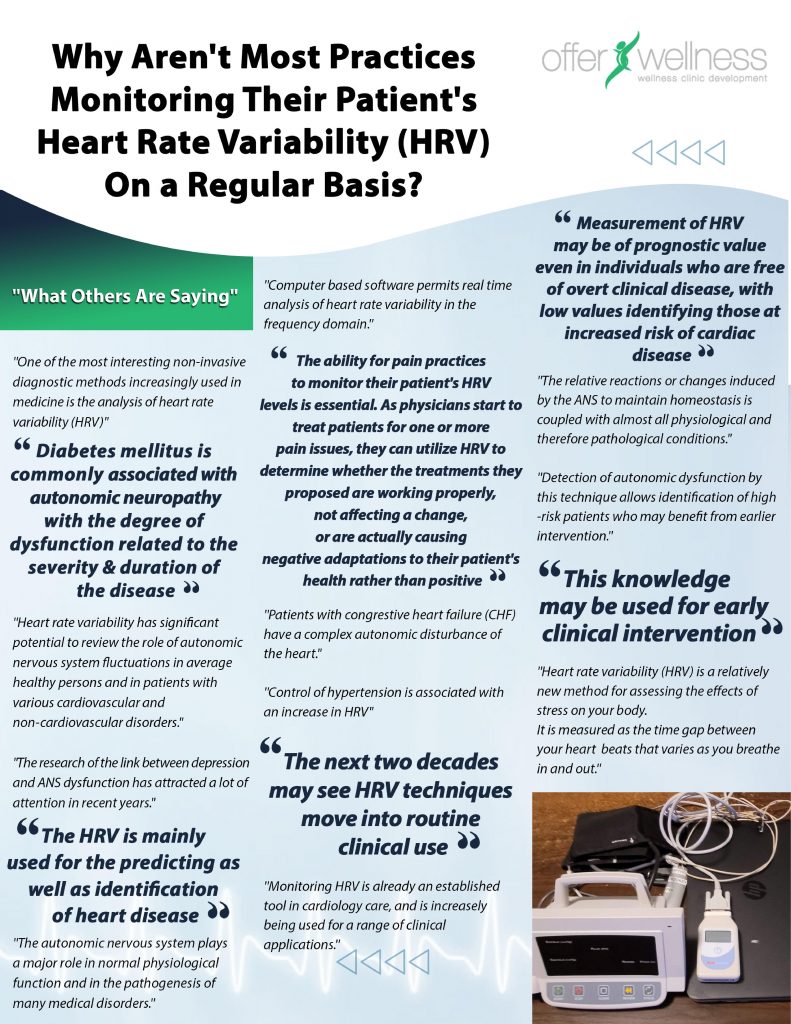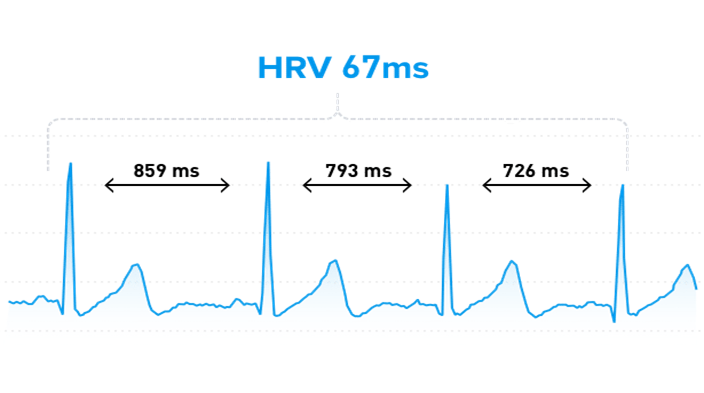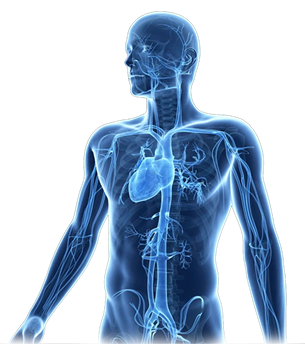
Heart rate variability, or HRV for short, is a measure of your autonomic nervous system that is widely considered one of the best objective metrics for physical fitness and determining your body’s readiness to perform.
However, Heart Rate Variability can also be a powerful tool in a physician’s arsenal for better decision making.
What is Heart Rate Variability?
Heart rate variability is literally the variance in time between the beats of your heart. So, if your heart rate is 60 beats per minute, it’s not actually beating once every second. Within that minute there may be 0.9 seconds between two beats, for example, and 1.15 seconds between two others. The greater this variability is, the more “ready” your body is to execute at a high level.

These periods of time between successive heart beats are known as RR intervals (named for the heartbeat’s R-phase, the spikes you see on an EKG), measured in milliseconds:
Intellewave calculates HRV using proprietary algorithms and a superior state-of-the-art approach based on one of the leading theories of Artificial Intelligence. As a direct indicator of Autonomic Nervous System activity, Heart Rate Variability is now considered the most important non-invasive biomarker to track.
HRV is like your individual fingerprint for the detection of chronic diseases and conditions, stress tolerance, adaptability and resiliency.
From medical practices to sports facilities, the underlying theme is to non-invasively gain deeper, objective insight into the body’s systemic condition
What Causes Heart Rate Variability?
Parasympathetic vs. Sympathetic

Although HRV manifests as a function of your heart rate, it actually originates from your nervous system. HRV is simply a measure of the variation in time between each heartbeat. This variation is controlled by a primitive part of the nervous system called the autonomic nervous system (ANS). It works regardless of our desires and regulates, among other things, our heart rate, blood pressure, breathing, and digestion. The ANS is subdivided into two large components, the sympathetic and the parasympathetic nervous system, also known as the fight-or-flight mechanism and the relaxation response. Your autonomic nervous system, which controls the involuntary aspects of your physiology, has two branches, parasympathetic (deactivating) and sympathetic (activating).
The Parasympathetic Branch (often referred to as “rest and digest”) handles inputs from internal organs, like digestion or your fingernails and hair growing. It causes a decrease in heart rate.
The Sympathetic Branch (often called “fight or flight”) reflects responses to things like stress and exercise and increases your heart rate.
Heart rate variability comes from these two competing branches simultaneously sending signals to your heart. If your nervous system is balanced, your heart is constantly being told to beat slower by your parasympathetic system and beat faster by your sympathetic system. This causes a fluctuation in your heart rate: HRV.
